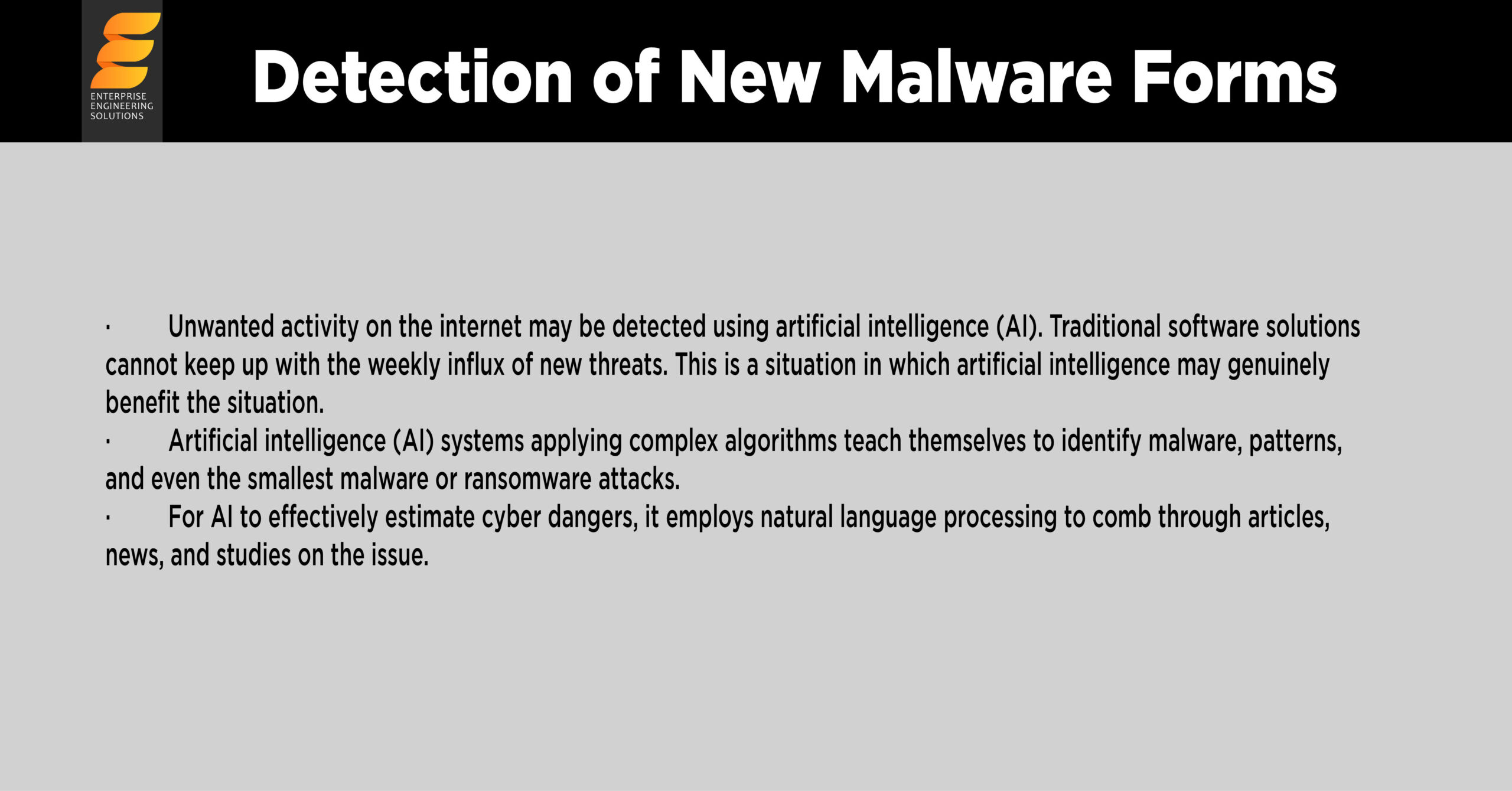How to use Artificial intelligence against cyber attack be used? It will be discussed in this blog. There is an ever-increasing attack surface for cyberattacks in today’s commercial contexts. Because of this, a company’s cybersecurity posture must be assessed and enhanced using more than simply human data.
These technologies are vital in the battle against cybercrime because they can swiftly scan through vast volumes of data and identify a wide variety of potential threats, from malware to probable phishing efforts. Data from the past and the present may be used to identify cyberattacks in the future. EES improves capacity, energy, and cost management with Artificial Intelligence consulting services.
Artificial intelligence Against Cyber Attack
AI may be used in a wide range of industries, including cybersecurity. It is now possible to identify threats automatically and respond more quickly than ever because of advances in AI and machine learning. AI has several advantages and applications in cybersecurity, including the following:
Detection of New Malware Forms

- Unwanted activity on the internet may be detected using artificial intelligence (AI). Traditional software solutions cannot keep up with the weekly influx of new threats. This is a situation in which artificial intelligence may genuinely benefit the situation.
- Artificial intelligence (AI) systems applying complex algorithms teach themselves to identify malware, patterns, and even the smallest malware or ransomware attacks.
- For AI to effectively estimate cyber dangers, it employs natural language processing to comb through articles, news, and studies on the issue.
- Anomalies, cyberattacks, and strategies to avoid them may all be discovered in this manner. Cybercriminals are much like the rest of us in that they prefer to stay on top of the most recent trends.
- Using artificial intelligence, cybersecurity solutions may anticipate how an attack on your system will be carried out, giving you the most current information on global and industry-specific threats.
Preventing the Bots
- Bots may account for a significant amount of today’s internet traffic. A few of the difficulties that might occur from using bots include account takeovers and data fraud.
- An ever-changing environment requires us to constantly improve our cybersecurity protocols, where machine learning comes in (AI).
- Organizations may get insight into the regular user journey and the possibly risky unique route by monitoring trends in user activity.
The Ability to Predict a Security Breach before it happens
- Every device and program with access to a given system may be accounted for using artificial intelligence technologies.
- By anticipating which of your systems will be breached, artificial intelligence can help you make the most of your security resources.
- Artificial Intelligence (AI) may help you enhance your cyber security.
- Over the past several years, endpoint security has improved dramatically.
- Artificial intelligence is necessary because of the ever-increasing quantity of remote work gadgets (AI).
- With a virtual private network (VPN) and a signature-based antivirus tool, remote malware and ransomware assaults may be protected against. As a result, if you wish to remain protected, you must keep abreast of changes to signature definitions.
- Antivirus software or the solution itself might be in danger if they did not realize they needed to be updated. Signature protection may become useless if a new kind of malware appears.
- It is possible to train an endpoint’s behavior using AI-based security. The application of artificial intelligence may be utilized to discover anomalies and restore the system to a safe condition in an attack.
Will Cybersecurity Suffer as a Result of AI’s Detrimental Consequences?
- The enormous potential of Artificial intelligence against cyberattacks for improving cybersecurity has just been scratched the surface of cyber threats.
- It is essential to keep in mind that AI has disadvantages like any other technology. An AI system would need a substantial growth of a company’s financial resources to build and maintain.
- To train AI systems, you will require a wide range of data sets, including malware and non-malicious and anomalous programs. Most businesses cannot afford to collect all of these data sets since doing so would take too much time and money.
- A paucity of data and events might cause AI systems to deliver incorrect conclusions and false positives. For one thing, depending on shaky information may backfire.
- Cybercriminals may also use AI to research their software and carry out more sophisticated attacks, which brings us to the next subject.
Conclusion
Artificial intelligence against cyberattacks is increasingly becoming a must-have technology to increase IT security teams’ performance. An enterprise attack surface can no longer be effectively protected by people alone; AI delivers the in-depth threat intelligence needed to lower the risk of a breach while simultaneously strengthening security posture.
A further benefit of artificial intelligence is that it may aid in assessing risks, prioritizing those that are most critical, and directing the incident response. Although AI may have certain negatives, it will be a driving force in cybersecurity and help companies design a complete defensive plan.





